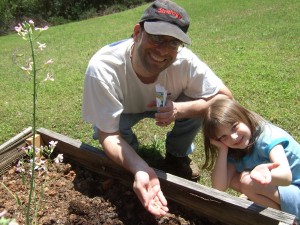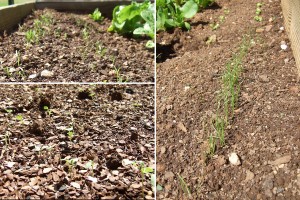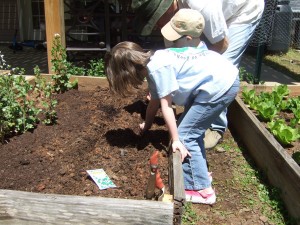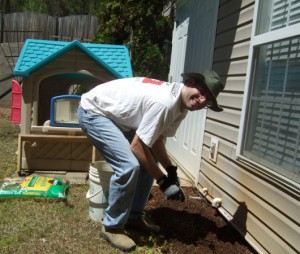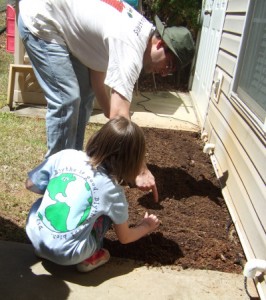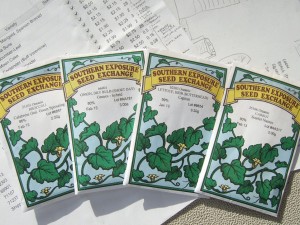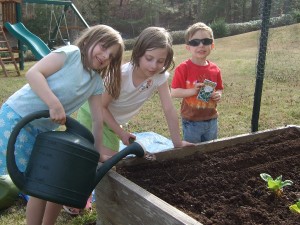Corn
It’s time to plant corn but the area we plan to use isn’t ready yet. For now, we’ll plant these seeds in the end of the bed with the snap peas and radishes. This way, we’ll have some plants ready to transplant once we get their new home ready and won’t be a few weeks behind. Kids love planting corn. It’s an easily recognizable seed of good size for them to hold and all they have to do is poke it into the soil. They’ve been helping plants corn since they were two years old.
The Three Sister Plan
Our plan is to use the three sisters method to grow some circles of corn, pole beans, and squash. We’ve tried this before in the garden beds and it takes a lot of room. Growing squash in the raised beds is really a waste of prime growing space because they end up consuming so much space and typically grown out into the yard.
The basic idea of planting these three crops together is that the corn provides a pole for the beans to grow up while the squash fills in a blocks out the weeds. There are also nutrient benefits with the beans fixing nitrogen for the other plants. Once the squash leaves are big enough, they act like a mulch, locking the moisture close to the ground and preventing evaporation.
The last time we grew the pole beans on the corn stalks, the beans outgrew everything and eventually collapsed the corn structure. It looked like kudzu overtaking. However, it was easy to pick the beans so we decided to try again. Now, all I need to do is prepare the area of the yard where we’ll plant these crops.
Seedlings Sprouting
After planting and watering, these’s still always a glimmer of doubt that anything will grow. What a joy to see the tender shoots rise through the soil. On the top left, are the fuzzy tops of our two rows of carrots planted in the deep end of the bed. Below on the left are the scattered broccoli seeds making their appearance. On the right, in the foreground, is a row of little onion hairs. They are planted way too close together but we’ll take care of that when they get bigger. Behind them are the first tiny leaves of new lettuce. This is the first time we’ve planted this variety of loose leaf lettuce but we’ve got two fine rows started.
